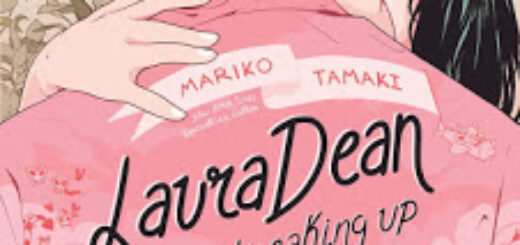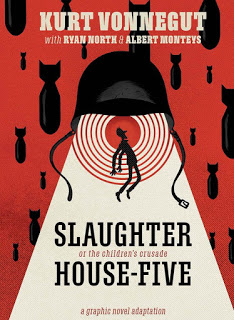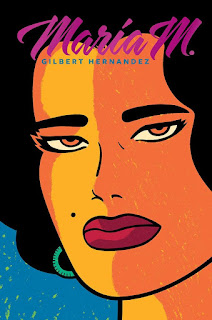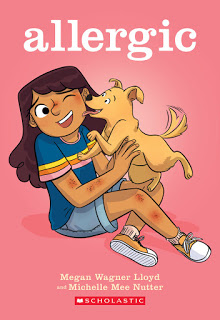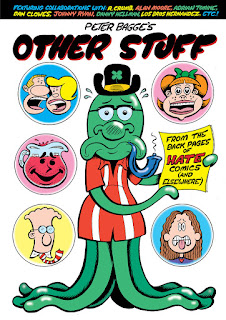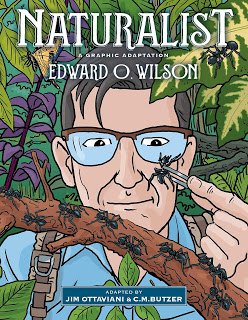Laura Dean Keeps Breaking Up With Me by Mariko Tamaki and Rosemary Valero-O’Connell
What’s the opposite of a romance? Is there a word to describe a story about realizing you’re not in love, and that you need to get out of a relationship?
We could call it “anti-romance,” but that misses the point. It would be a useful word. Maybe someone will comment to let me know it already exists.
Laura Dean Keeps Breaking Up With Me is that kind of book: it’s a graphic novel, in that nameless opposite-of-romance genre. Francesca “Freddy” Riley is in high school in Berkeley, and is in a relationship with her school’s most magnetic and compelling figure, the titular Laura Dean.
Laura is a jerk, in the way that massively popular and attractive teenagers often are: no matter what she does or how she acts, everyone accepts it, even loves it. So, as we see her, she’s practically amoral, a monster of need who does whatever she wants at any moment and everyone else swoons at how awesome she is.
Freddy is not happy with this. But she is Laura’s girlfriend. That’s good, because being Laura’s girlfriend is exciting down to the ends of her nerves all the time, often even in good ways. They have some level of a physical relationship — Laura is very physical, with Freddy and other girls, as you would expect — but Breaking Up keeps it school-library friendly by showing the girls in bed or kissing without getting into details of how physical these seventeen-year-olds are getting. [1]
Being Laura’s girlfriend is also good socially, to some degree: everyone in school knows who Freddy is, and she gets reflected glory. Of course, Laura is mercurial and capricious, so everyone in school also knows when Freddy is no longer Laura’s girlfriend, which has happened at pretty much every holiday over the past year.
So being Laura’s girlfriend is also bad. For that reason, and because Laura’s massive neediness keeps Freddy focused on her all the time, rather than on her friends and own life and plans and goals. (Especially friends, in this graphic novel’s case. Most seventeen-year-olds would be worrying about their futures and planning for college, but that’s not happening here.) Those of us who are further along in adulthood will see it as all bad: even the supposedly good stuff is tending to erode Freddy’s sense of self and empowerment.
Breaking Up is more of a character study than a book of plot: things happen, and time passes, but they’re mostly accumulating moments, each giving Freddy a little more perspective and distance, until she can finally stop being the person Laura Dean keeps breaking up with. She’s got a circle of friends at the beginning, and a new friend she meets along the way – and a girl she kisses impulsively at a party – but this does not turn into a romance. This is not the story of how Freddy dumps Laura and finds Tru Wuv.
It’s the story of how Freddy dumps Laura because it’s what she needs, which is a more honest and true story. And it does take her a long time to do that, which may make some readers of my age start yelling at her through the pages of the book, but the book would be much shorter if Freddy were quicker to realize what she needed to realize.
I’ve gotten this far without stating the obvious: Freddy and Laura are both women. (Girls? Seventeen is so in-between. But let me give them the benefit of the doubt.) [2] That will be important to a lot of young readers looking for stories that represent their own lives — Freddy’s friend group also is a good diverse collection of people you can see someone like Freddy gravitating to in a place like Berkeley. But that they’re both women is not important to the story being told, or the genre it’s told in. And that’s a good thing.
Romances, and whatever anti-romances should really be called, are about people. Two people, typically, though I don’t know if I need to be dogmatic there. They need to have an attraction to each other. Their gender and sex and presentation, though: that can help shape a specific story, but it’s not genre-defining. It’s still romance. These two people are women. That’s what this story is. But a thousand other variations are possible, and exist out there.
So this is a good anti-romance, that happens to be about two seventeen-year-old high school women in Berkeley. I’d expect that from Mariko Tamaki, writer of Skim and This One Summer . I probably should have expected it from Rosemary Valero-O’Connell, best known for Don’t Do Without Me , but I’d never read her work before this.
If you’re in the mood for anti-romance, or just a story about complicated teenage relationships, check it out. If you’re in a complicated teenage relationship, I feel for you, and hope you know that life does go on and will settle down in time. Maybe Freddy can help show the way for you.
[1] Having been a seventeen-year-old, my bet is as physical as possible, as often as possible, all the time. Laura seems that type, for one thing.
[2] As I type this, I realize that I don’t have a tag for LGBTQ+ books, and suddenly wonder if I should create one. But my tag style is so arch and sarcastic that anything that “fits” here would be a bad idea for multiple reasons. So, unless I just use “LGBTQ+,” it will be without a tag. And, frankly, who cares what this old white guy thinks of LBGBTQ+ books, anyway?
![]()
![]()
Reposted from The Antick Musings of G.B.H. Hornswoggler, Gent.

